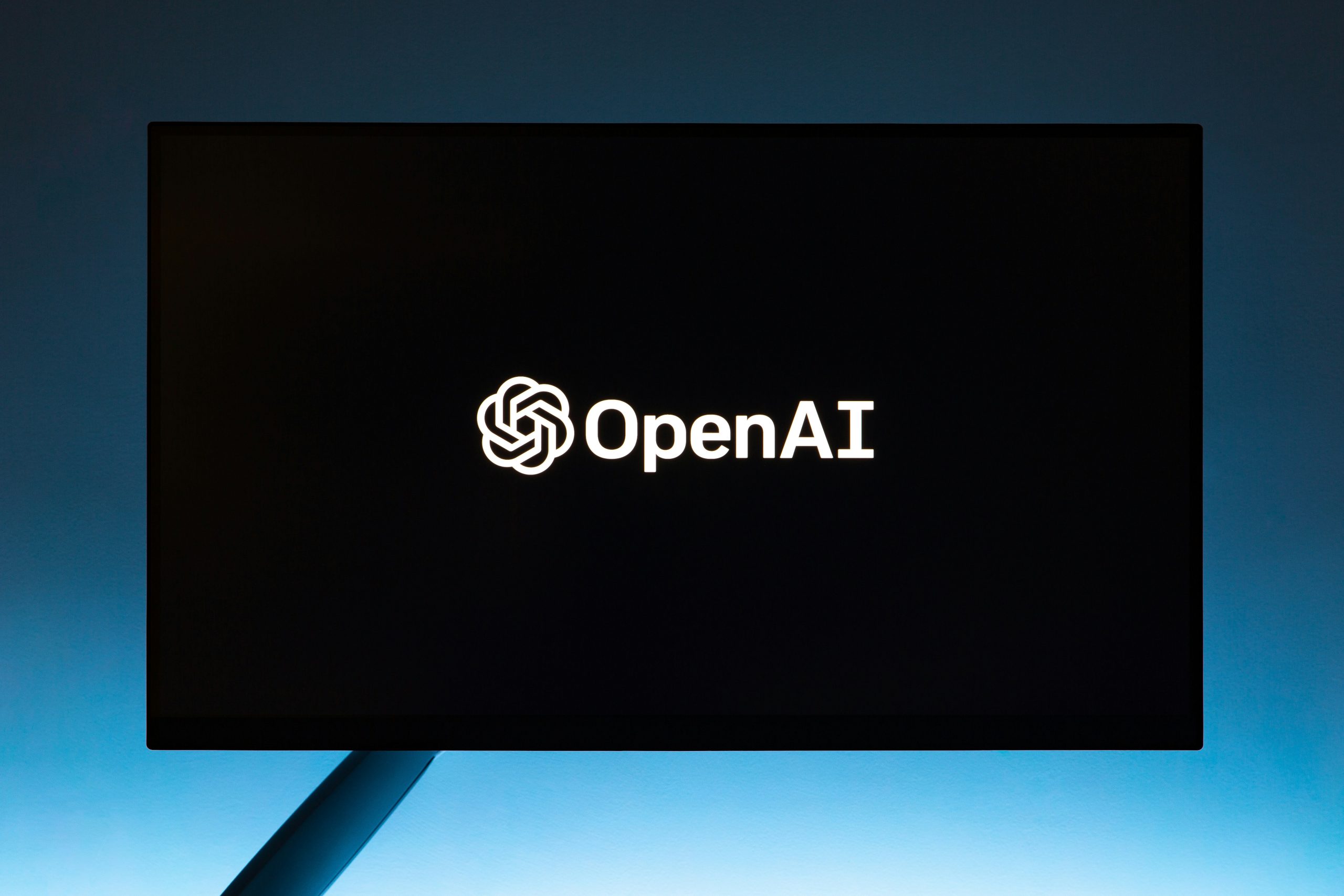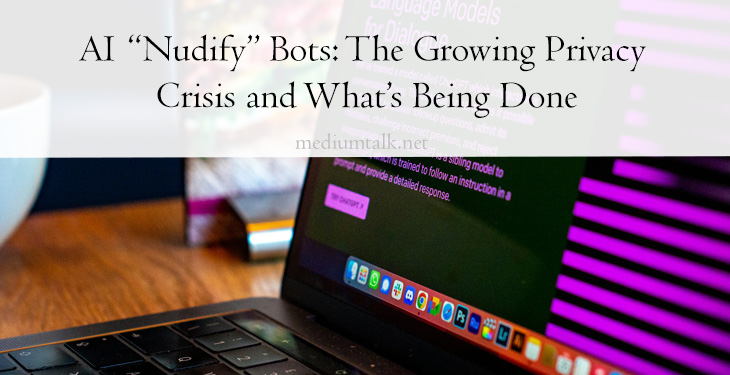In an age where technology often blurs the lines between reality and fantasy, a disquieting new frontier has emerged: AI nudify bots. These sophisticated algorithms, designed to manipulate images with alarming ease, have sparked a fervent debate about privacy in an increasingly digital world. Imagine waking up one morning to discover that your likeness has been weaponized against you—stripped of your dignity and autonomy by a faceless algorithm. This nightmarish scenario is no longer confined to science fiction; it’s becoming an unsettling reality as these bots proliferate online.
As our lives become more entwined with digital media, the stakes surrounding personal privacy are skyrocketing. The ability to create hyper-realistic alterations of individuals poses profound ethical dilemmas and raises urgent questions about consent, identity, and surveillance in our interconnected society. In this article, we’ll delve into the mechanics behind AI nudify bots, explore their implications for individual rights and mental health, and examine what measures are being implemented—or need to be taken—to combat this growing crisis. Prepare to navigate through a landscape where innovation meets vulnerability and discover how society can reclaim its narrative against this alarming trend.
What Are AI Nudify Bots?
AI Nudify Bots utilize advanced algorithms and machine learning techniques to automate the process of removing clothing from images, often targeting personal photos shared online without consent. These bots exploit publicly accessible data, feeding on millions of images to learn and replicate nuanced human features and body types. While initially designed for entertainment or artistic exploration, they have spiraled into a disturbing tool for privacy violations, fueling cyberbullying and non-consensual sharing of intimate material.
What makes these bots particularly unsettling is their ability to act swiftly across social media platforms, leaving victims feeling powerless against an unseen digital menace. The psychological impact extends beyond mere embarrassment; it raises crucial questions about consent in the digital age and the ethics surrounding AI usage. As technology evolves at breakneck speed, society must grapple with how we balance innovation with the safeguarding of individual dignity. Regulatory measures are now being discussed—but can legislation keep pace with such rapid technological advancements?

The Technology Behind Nudification
The technology behind nudification relies heavily on advanced algorithms and machine learning techniques, which analyze images to identify human bodies with alarming precision. At the core of these AI nudify bots are deep learning models that have been trained on massive datasets containing both clothed and unclothed images. This raises ethical questions about consent; many of these datasets may include personal images uploaded without permission, leading to potential misuse of technology that lacks checks against privacy violations.
Furthermore, the process involves sophisticated image processing methods—like semantic segmentation—that distinguish between clothing pixels and skin pixels with uncanny accuracy. As this technology evolves, it raises concerns about a dystopian future where individuals might find themselves exposed not just online but also through the capabilities of malicious actors exploiting these AI systems for nefarious purposes. There’s a chilling irony in how technology designed for creative expression or even medical imaging can be repurposed into tools for invasion of privacy. The industry must grapple with establishing strict ethical frameworks and legislation to guard against abuses while fostering innovation responsibly.
Privacy Violations and Ethical Concerns
The emergence of AI nudify bots has sparked a fierce debate about digital ethics and individual privacy. These algorithms, designed to manipulate images by removing clothing or altering appearances, pose significant risks not just to the subjects depicted but to societal norms regarding consent and body autonomy. As technology advances at breakneck speed, we must question whether our current legal frameworks are equipped to handle these nuanced violations of privacy. The normalization of such tools can blur the lines between art, parody, and outright exploitation.
Moreover, the implications extend beyond individual cases; they raise pressing questions about consent in an interconnected digital landscape. With user-generated content being shared across numerous platforms without explicit permission for alteration or distribution, users may find their likenesses exploited in ways they never anticipated. This makes it imperative for tech companies and policymakers to step up with comprehensive regulations that address both accountability and ethical use of advanced technologies. Only through collective action can we begin to redefine what constitutes acceptable boundaries in this brave new world where pixels often take precedence over principles.

Real-Life Cases of Abuse
As the prevalence of AI nudify bots escalates, the dark reality of abuse surfaces more frequently in real-life scenarios. One harrowing case involved a young woman whose private images were manipulated and disseminated online without her consent. The psychological impact was profound; she experienced anxiety, depression, and a sense of violation that permeated her day-to-day life. This incident underscores how technology, initially designed to connect and empower individuals, can be weaponized against them.
Another disturbing example came to light when an ex-partner used an AI nudify bot to create humiliating content aimed at revenge after their separation. This not only shattered the victim’s reputation but also blurred the lines between real and digital identities in an age where social media visibility is paramount. Such cases exemplify a troubling dynamic where trust is exploited through advanced tech tools that diminish personal safety and privacy, effectively highlighting an urgent need for regulatory measures.
These realities compel society to confront not just the technological advancements shaping our lives but also the ethical ramifications they bring along. As victims become aware of their plight in this digital landscape, it pushes organizations and policymakers alike to address this growing crisis decisively—integrating robust legal frameworks designed to safeguard individual rights in an increasingly precarious environment.
Legal Efforts to Combat Nudification
As AI nudification technology becomes increasingly sophisticated, legal frameworks across various jurisdictions are scrambling to catch up with the rapidly evolving landscape. Privacy advocates emphasize the importance of enacting comprehensive laws that specifically address the unauthorized use of personal images by these bots. Recent attempts in California have paved the way for a more robust legal response, proposing stringent penalties for individuals or entities that misuse AI technologies to manipulate images without consent. Yet, this battle is far from over; enforcing such regulations remains challenging in an environment where digital anonymity often shields perpetrators.
Furthermore, international cooperation is becoming crucial as these issues transcend borders. The potential for AI nudification technologies to exploit individuals from different countries presents a pressing need for global standards and agreements on privacy rights and image protection. Initiatives like the EU’s General Data Protection Regulation (GDPR) serve as models but need adaptation to cater specifically to new threats posed by AI manipulation tools. Engaging tech companies in these discussions is essential—they must be held accountable not just legally but also ethically, ensuring that measures are put in place to prevent abuse before it occurs. In this complex interplay between innovation and protection, the fight against nudification reflects our broader struggle for privacy rights in an increasingly digital world.

Industry Responses and Preventive Measures
As the threat of AI nudify bots escalates, industries are mobilizing to combat this invasion of privacy. Tech companies are not only enhancing their algorithms to detect and filter out inappropriate content proactively but also investing in partnerships with organizations that specialize in online safety. These collaborations aim to develop robust frameworks that empower users—providing them with tools to control and protect their digital identities.
Moreover, platforms are increasingly prioritizing transparency by publishing reports on the effectiveness of their countermeasures. This move not only strengthens user trust but also sets a precedent for accountability across the tech landscape. Legal responses are gaining momentum too; legislators are drafting stricter laws tailored to address these emerging threats, offering penalties for perpetrators who exploit AI technologies in harmful ways. By combining technology with regulatory action, industry stakeholders strive to create a safer digital ecosystem where individuals’ rights and dignity remain intact amidst rapid technological advancements.
Conclusion: Navigating the Privacy Crisis
As we traverse the uncharted territory of AI-driven technologies, it becomes increasingly apparent that navigating the privacy crisis demands collective responsibility. The proliferation of nudification bots calls for a reevaluation of our digital ethics, particularly concerning consent and agency. Individuals must arm themselves with knowledge—not only about their own digital footprints but also regarding the mechanisms behind these emerging tools. Digital literacy is pivotal; understanding how algorithms operate can empower users to take control over their data rather than passively surrendering it.
Moreover, collaboration between technologists, legislators, and advocates is essential in crafting robust frameworks that prioritize user privacy without stifling innovation. Policymakers must adapt to a rapidly evolving landscape, ensuring regulations keep pace with technological advancements while still fostering creativity and progress in artificial intelligence. As we collectively confront this privacy crisis, fostering an open dialogue among all stakeholders will be key to developing ethical standards and solutions that not only protect individuals but also create a more transparent digital ecosystem for everyone. By embracing this multifaceted approach, we can build a future where technology enhances our lives without compromising our fundamental right to privacy.
